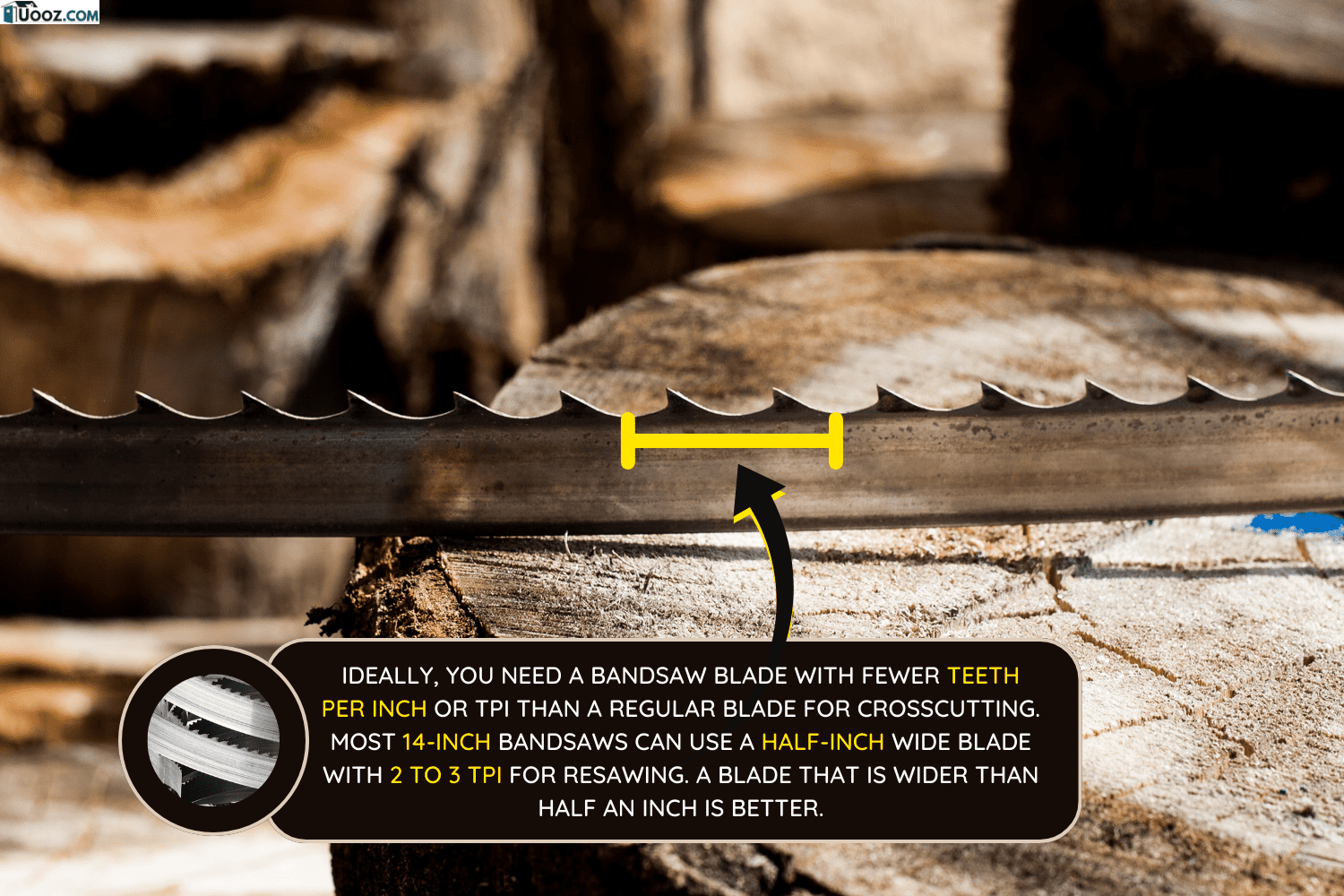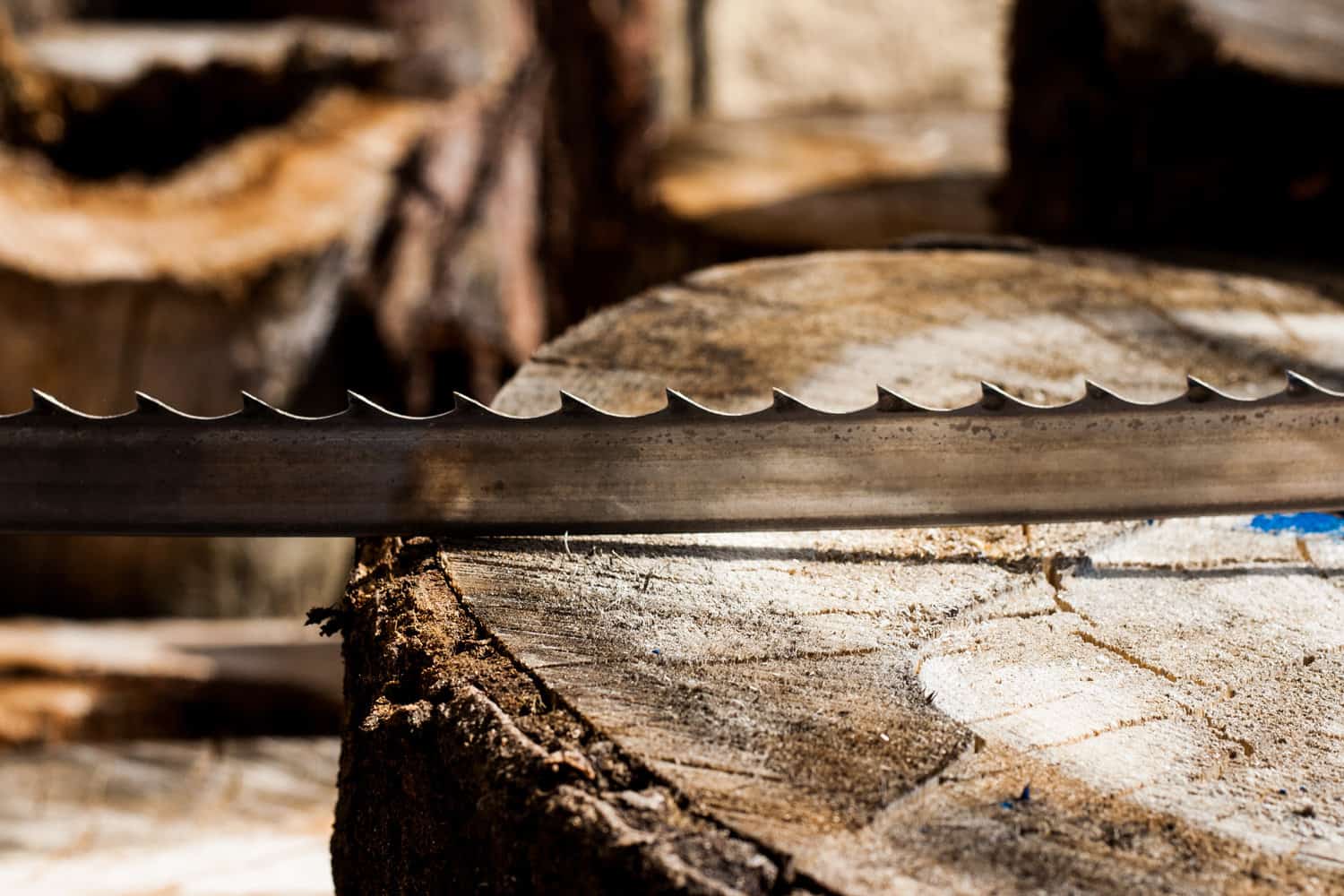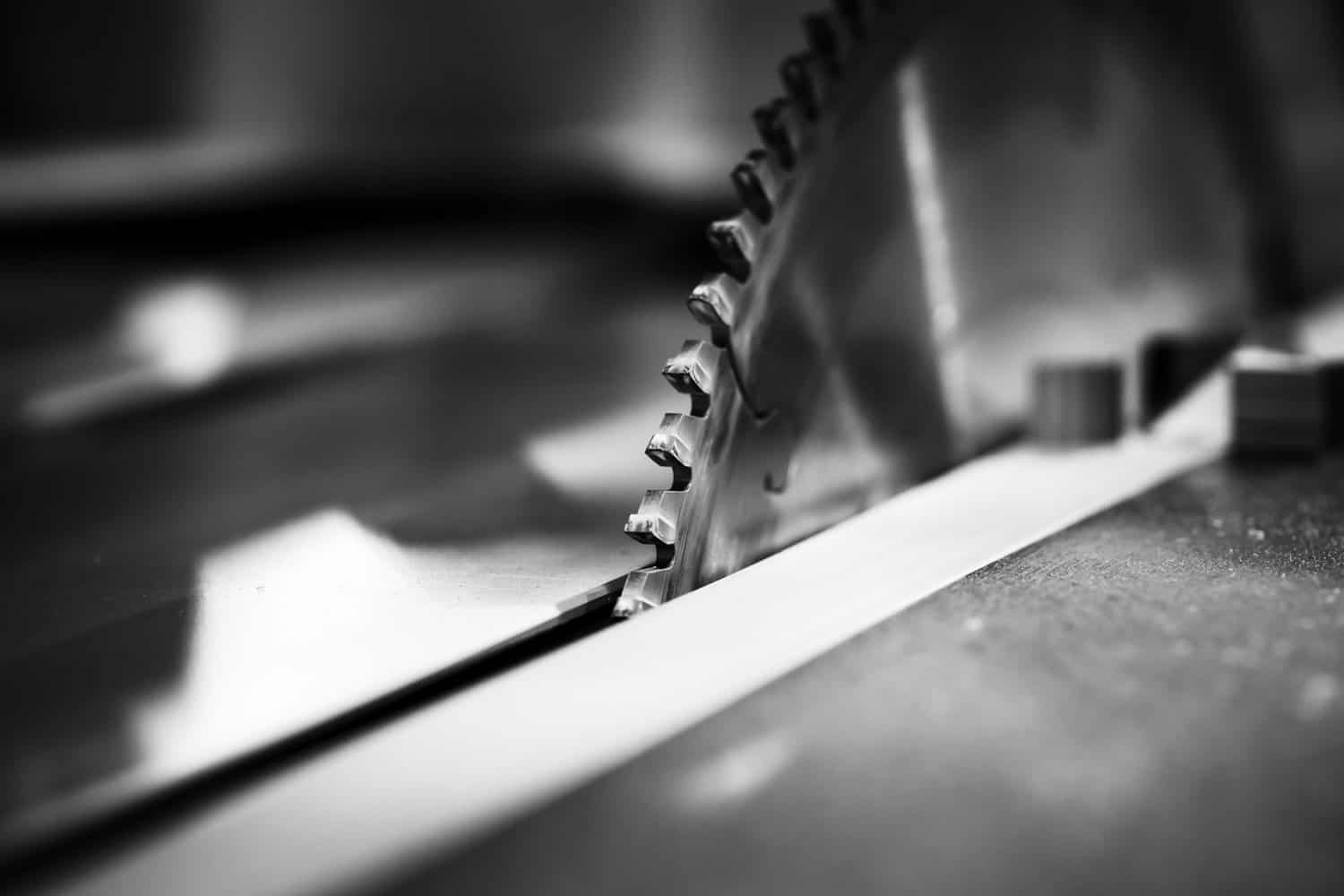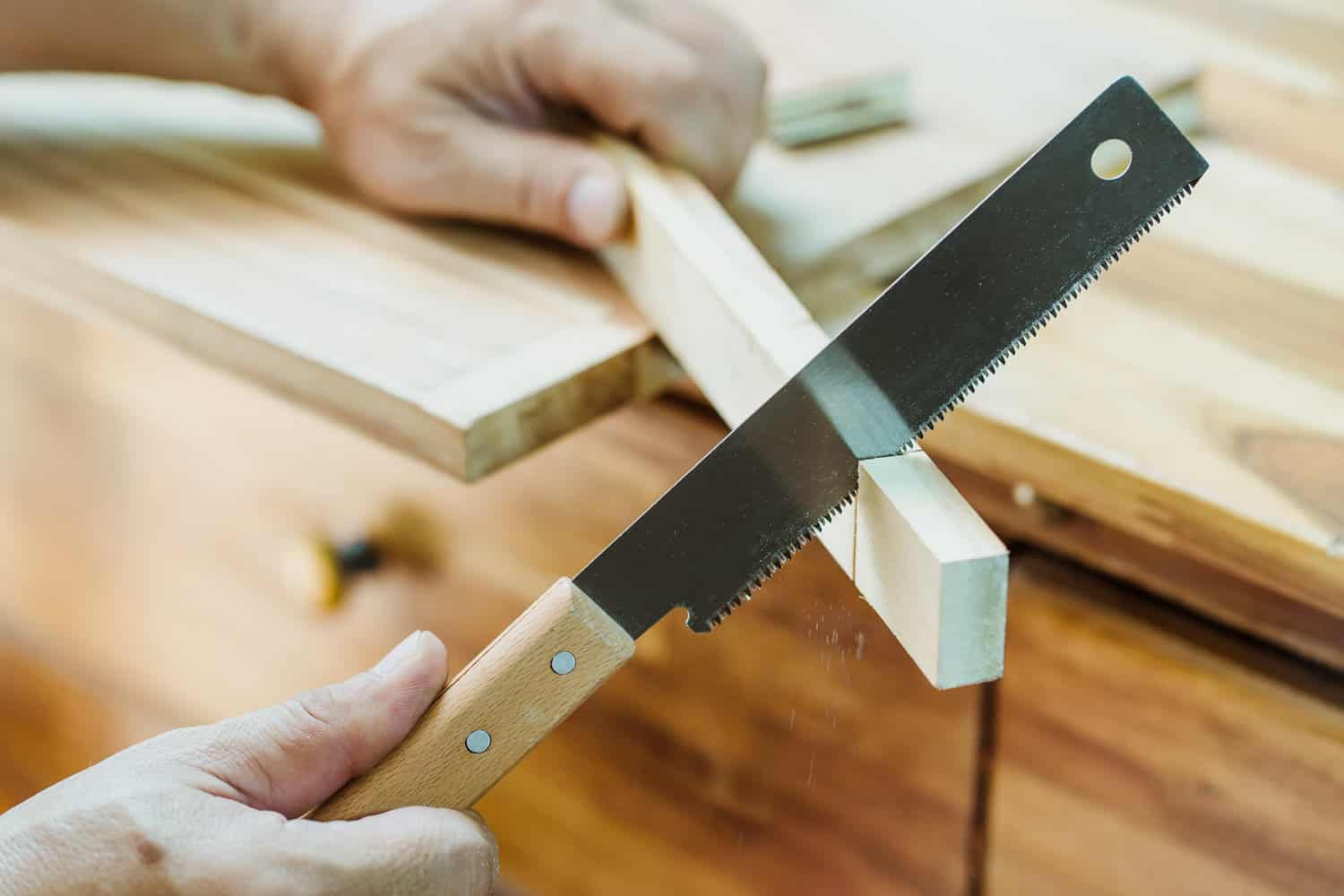Are you working on a woodworking project, and you want to know what is the ideal bandsaw blade to use for resawing? You’ve come to the right place, for we have researched this question, and we have the answer for you.
Ideally, you need a bandsaw blade with fewer teeth per inch or TPI than a regular blade for crosscutting. Most 14-inch bandsaws can use a half-inch wide blade with 2 to 3 TPI for resawing. A blade that is wider than half an inch is better.
Let’s talk more about the different things that you need to prepare for resawing in the sections below. Learn about the different tools that you can use to accomplish resawing.
Read on!

Why do woodworkers need to resaw?
A resaw cut is a type of rip-cut that cuts through the thickness of a piece of wood without changing the length and width. This allows you to create thinner slabs of wood from a single thick slab with the same width and length. In contrast, a rip-cut makes a piece of wood narrower, keeping its thickness and length.
Resawing can be done in different ways—not only through a bandsaw. We’ll talk about the different ways to resaw wood in the latter sections.
What is the purpose of resawing?

The main purpose of resawing wood is to bring a slab of wood to a thickness that matches your needs.
You might have a wooden slab that is two inches thick, but all you need is a wooden slab that is an inch or an inch and a half thick. Normally, you’d shave off the excess thickness until you get the thickness that you need for your project. This turns the excess width into sawdust.
However, if you resaw the wood that you will use, you will end up with two pieces of wood instead of just one. You can trim the remaining wood further after resawing. Then you can use the remaining wood for another project.
Once you become comfortable with resawing wood, you can start making your own plywood that has your specifications. You can cut however thin slabs of wood you want for your plywood.
Similarly, you can also cut your own veneer by resawing. Making your own veneer allows you to do your own veneer matching, creating a wood grain pattern from wood with a prominent grain will make the veneer look even more beautiful.
The advantage of resawing is that it reduces the waste from shaving wood to the thickness that you want, and it gives you two slabs of wood that you can use later.
Perhaps the biggest reason why professional woodworkers do resaw is that it helps bring out the natural beauty of grained wood. Resawing allows you to create slip-matched wood pieces, book-matched pieces, or swing-matched pieces.
How to resaw wood?
There are three ways to resaw wood. You can combine these three methods to make additional methods if you want. If combining the three basic methods would make it easier for you to resaw, then go for it.
The most popular way to resaw wood is by using a bandsaw.
A bandsaw is a mechanical saw that is run by an electrical engine. Two large pulleys are found at the top and bottom of the bandsaw. A long thin blade made of flexible metal runs across the two pulleys.
When the pulley rotates, the thin blade moves fast in the direction of the pulley’s movement. This allows the blade to continuously cut any material that you move across its blades.
A bandsaw is ideal for resawing because you can adjust the exposed length of the blade, allowing you to resaw wide slabs of wood.
Preparing Wood For Resaw
Ideally, you should prepare your wood for resawing to make it easier to cut and make an even cut. To prepare your wood, both faces should be parallel to each other. At least one of the edges should be perpendicular to both faces.
Resawing Wood Using A Bandsaw

- Install a wide blade into your bandsaw. A wide blade is ideal for resawing because it is more stable while you’re resawing, reducing the chance that the blade will stray away. Three-quarters of an inch wide to an inch wide is best if you have a wide board to resaw. The low TPI allows your blade to push sawdust out more easily from the wood. Sawdust can affect the effectiveness of your blade to cut your wood.
- Adjust the bandsaw fence to the width that you need to cut.
-
- If your bandsaw does not have a fence, you can make one by connecting two wood planks at a right angle. A perfect right angle is important.
- Clamp your makeshift fence on the bandsaw to match the width that you need.
- Adjust the blade guide’s height. It should be able to accommodate the width of your wood. Add a quarter of an inch to the distance of the blade guide to the wood.
- Measure the width of the resaw cut that you’d like to make on your wood. Mark your measurement with a clear line.
- Turn on the saw and slowly feed your wood into the bandsaw. Adjust the position of the wood if the blade of the bandsaw strays off the line that you made.
-
- Keep in mind that you should maintain a safe distance between your fingers and the blade of the bandsaw.
Olson 1/2-Inch 3 TPI Blade is available on Amazon through this link.
Resawing Using A Table Saw

It is possible to resaw with a table saw. However, instead of just one perpendicular edge to the two parallel faces, you will need two perpendicular edges that are opposite each other.
Additionally, there is a limit to the width of wood that you can resaw using your table saw.
Freud LM72M010 Rip Blade is available on Amazon through this link.
Measure the size that you need to cut and mark it. Make sure to make a straight line, or the cut will not be straight.
- Start by selecting a table saw blade that has deep gullets to become more effective in removing sawdust as it cuts through the wood. Install your selected blade into your table saw.
- Check the height of the fence. If your board is more than twice the height of your fence, clamp an auxiliary fence over the fence of your table saw. This is to make sure that your board will not tip over the fence while you’re cutting it.
- Adjust the saw blade to a height of an inch. Adjust it to half an inch if your table saw doesn’t have a powerful motor.
- Turn the table saw on and start to feed the wood. You will need two push sticks—one to push the wood to the fence and the other to push the wood towards the blade.
- Push the wood to the blade. If your table saw doesn’t have a powerful motor, push slowly.
- Once you complete making the half-inch cut, flip the wood over with the same surface touching the fence.
- Do the same half-inch cut on the opposite side.
- Flip the wood in the same way.
- Adjust the height of the table saw's blade by another inch or half an inch.
- Repeat Steps 5 to 9, adding the same incremental height to the table saw until you complete the resaw.
IRWIN QUICK-GRIP Clamp is available on Amazon through this link.
Resawing Using Japanese Saw

Resawing using a Japanese Ryoba saw is one of the ways to manually resaw a wooden plank.
Manually resawing your wood plank can also be done with a hand saw or a frame saw. Follow the same method below using a manual saw that you’re more comfortable with.
- Make measurements on the wooden plank and mark your measurements on all the edges of the wooden plank.
- Fasten your wooden plank on a table vise to ensure that it will not move while you’re cutting through it.
- Start cutting from one corner of the wooden plank until you complete a triangular shape.
- Move to the next corner and start sawing there. Adjust the board on your vice if you need to make it easier to cut through that corner.
- Once you complete another triangle from the second corner, start sawing the third corner until you complete the third triangle.
- Move to the fourth and final corner and start sawing there until you complete the fourth and final triangle.
-
- Make sure that the corners of these four triangles overlap each other.
- Once you complete all four triangles, start cutting downward from one edge of the wood plank. The kerf from the four triangles will guide your saw as you cut down from that edge.
- Once you complete sawing a triangular shape from that edge, move to the next edge doing the same thing.
- Once you complete all edges. Start sawing from one corner once more.
- Repeat the sawing process for the rest of the corners or until you’ve sawn through the wood.
SUIZAN saw is available on Amazon through this link.
Conclusion
The ideal bandsaw blade for resawing is wide—half an inch to three-quarters inch wide—with a low TPI count. 2 to 3 TPI is the ideal number to effectively push the sawdust out during sawing.
If you enjoyed reading this article, you might find the articles below equally enjoyable to read:
Does Washing Machine Drain Need To Be Vented [Inc. Why And How To]?




